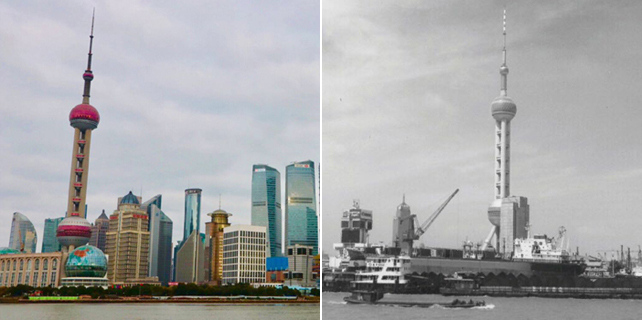Chinese discovering Kansas City, Kan.
When biomedical researcher Li Linheng first moved to Kansas City, Kansas after getting his PhD from New York University and a five-year post-doctorate stint in Seattle, he expected that he would leave after a couple of years and return to the coast.
That didn't happen.
He ended up staying for 16 years in one of the biggest cities in the Midwest, a city that's seeing a slow but steady growth in its Chinese population, many of whom have left major US coastal cities for job opportunities and are staying for the convenience and low cost of living that the Midwest provides.
Li, 59, who works at the Stowers Institute for Medical Research, is enthusiastic about Kansas City, which is often referred to as the Greater Kansas City metropolitan area because there are technically two Kansas Cities in the US: one in Kansas and one in neighboring Missouri.
The larger Kansas City is in Missouri, with a population of roughly 467,000, according to the latest Census Bureau figures. The smaller one in Kansas has about 149,000 people. The two-part city straddles an imaginary state line. The Missouri side is generally where business districts are; the Kansas side contains many residential neighborhoods.
"People on the coasts think the Midwest is boring, and when you first come here, it's true. I thought I would leave the city after five years," Li said.
"This is an attractive place. The living environment is good, the education system - particularly for students in elementary to high school - is high quality. There's no traffic, and living expenses are lower, but the quality of life is higher. All of these [qualities] are attractive [to] people who have moved from the coasts," he said.
The Asian population totals approximately 45,000, and the Chinese community makes up roughly a third of that, according to KCUR, a public radio station in Kansas City. The figure is up from the roughly 5,000-6,000 Chinese in the city a decade ago. Most Chinese now live in Overland Park, the most populous city in Johnson County, Kansas.
"When we were in New York, [my wife and I] enjoyed it," he said. "We were students and we didn't have kids, and there was so much variety and activity in the city. Seattle had oceans, mountains and lakes."
"But when I came [to Kansas City] and I had kids, the important thing was that, compared to the coasts, the Midwest was the place that really preserves what people call 'American values.' Basically, being very focused on family, on raising kids, providing a good environment for the kids, having big yards where they can play. It's like the values brought over by those on the Mayflower were somehow kept in the Midwest," he said.
Kansas City being a good place to raise children and own property was a point made by several interviewed by China Daily, who all pointed out that the public and private schools in the city were good. The state's schools rank 10th best in the nation, based on federal data from 2008 to 2014.
"The schools are great - they're very high quality schools," said Fred Jiang, a hedge fund manager. "In New York City, if you want to get into the best private schools, it's really, really difficult. Here in Kansas, it's pretty easy. We also have pretty good public schools."
Jiang moved to Kansas City 15 years ago when the company he worked for at the time asked him to relocate to its Kansas City headquarters. Jiang has since started an investment firm with branch offices in Boston and New York, but said he still prefers to live in Kansas City.
"I [enjoy] the efficiency of the city. If I want to play golf, there are four golf courses within 10 minutes drive from my home. If I want to play tennis, there are tons of tennis courts nearby. Everything's within 15 minutes driving distance. In New York City, I used to play a lot of tennis and I drove like 45 minutes, an hour to get to a court," he said.
Rong Lei, president of the Kansas City Chinese American Association, said the presence of major engineering and IT firms like Sprint, Cerner, Black & Veatch Corp is inviting for Chinese graduates skilled in those fields.
"The living costs are lower than on the east and west coasts, and also the job growth has been fairly steady," he said.
According to the US Bureau of Labor Statistics, non-farm employment in the Kansas City metro area rose 0.9 percent in November 2016 compared to a year prior. The Missouri portion of the Kansas City metro area was largely responsible for the job growth, adding 1.6 percent from November 2015 to November 2016.
Housing prices also add to the region's allure: Rong, an engineering manager at Black & Veatch Corp, said recent graduates are able to afford their first houses, difficult to do in cities like New York and San Francisco.
amyhe@chinadailyusa.com
















